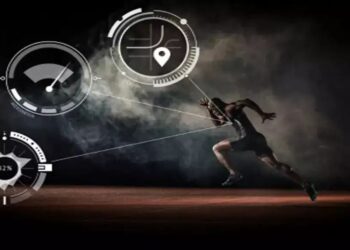/cdn.vox-cdn.com/uploads/chorus_image/image/55386017/twarren_surfacecomparison_1.0.jpg)
Microsoft now has a variety of Surface devices that are designed to replace your laptop. There’s the Surface Book with a removable display, the Surface Pro with a kickstand, and now the new Surface Laptop that is the most traditional laptop Microsoft has ever made. I’ve been using all three extensively recently and have been able to learn the strengths and weaknesses of each. If you’re thinking about buying one of Microsoft’s Surface devices, here’s what you need to know.
SURFACE BOOK
/cdn.vox-cdn.com/uploads/chorus_asset/file/7912477/akrales_161109_1261_A_0252.jpg)
I reviewed the original Surface Book nearly two years ago, and while I’ve been using it as my day-to-day laptop, it’s far from perfect. Microsoft created the Book with a detachable display, and it’s something I rarely ever use. You can push a button and the display will release and transform into a large tablet. I’ve used this for taking down notes or showing friends YouTube videos, but unless you’re an illustrator, it’s not a feature you’re likely to use regularly.
Using the Surface Book as a tablet isn’t ideal, either. Battery life when detached from the base is only around three hours, and it doesn’t have a kickstand to prop it up on a desk or table. Windows 10 still lacks tablet apps, so its best for basic tasks like watching videos or browsing the web. If that’s all you want to do, then it’s fine for that, but for anything more you’ll want a dedicated tablet like the iPad.
If you stick to using the Surface Book as a laptop, you’ll have a better experience. While the display is a little wobbly and top heavy at times, the base for the keyboard is sturdy and great for writing long emails or typing out dissertations. I rarely use the touchscreen, but I do occasionally reach up and swipe away notifications, scroll a webpage, or pinch-to-zoom on a picture. A touchscreen on a laptop isn’t essential, but you’ll notice a lack of one if you get used to something like the Surface Book.
The overall dimensions of the Surface Book make it heavier and chunkier than most 13-inch laptops, so consider that if you’re looking for a lighter laptop. The bonus of this heft is the battery packed into the base and the option to get a model with an additional GPU inside. The GPU-equipped Surface Books make a big difference for if you’re using them with external monitors and apps like Photoshop, and I’ve found the battery life on the Surface Book is solid at around seven hours for mixed usage.
Full Surface Book review.
SURFACE PRO
/cdn.vox-cdn.com/uploads/chorus_asset/file/8559603/twarren_170512_1708_0002.0.jpg)
I’ve been using a Surface Pro 4 as a secondary device, mostly in my living room, for around 18 months now. Microsoft’s latest Surface Pro simply improves the internals, the Surface Pen, and introduces some minor design changes. While the Surface Pro 4’s battery life only lasts around four hours for me, the latest Surface Pro stretches to about seven hours, which is a solid improvement. It’s more of a refined Surface Pro than a wholly new generation, but Microsoft has also solved some of the fan issues that have plagued the Surface Pro 3 and Pro 4.
If you opt for the Core i5 model you’ll never hear the fans as it’s a fanless design (and it’s not a Core M chip inside), but even with the Core i7 version I’ve only heard the fans once when I was running games and apps like Photoshop on an external monitor. During regular use, I’ve never noticed the fans, which is wildly different than the Surface Pro 4 that would spin its fans up at every opportunity.
The biggest drawbacks to the Surface Pro for me are the display size and the kickstand. I’d love to use the Surface Pro as a laptop replacement, but when I’m travelling to tradeshows I find it difficult to use in my lap for long periods of time. The kickstand isn’t sturdy enough, and the keyboard has a lot of flex when it’s not seated on a table. Microsoft’s 12.3-inch screen size is just a little too small for me, and I prefer the bigger 13.5-inch displays on both the Surface Book and Surface Laptop.
Microsoft’s latest Surface Pro also includes support for an updated Surface Pen. While the Surface Pen is now sold separately, it now supports tilt for shading and is way more responsive. I’m not an illustrator, but I’ve noticed the Surface Pen is definitely more responsive compared to the Surface Pro 4.
One of the other benefits to the Surface Pro is its weight. At 2.3 pounds with the Type Cover attached, it’s barely noticeable in a bag. I do occasionally travel into the office with the Surface Pro on days when I don’t want to carry the significantly heavier 3.6 pound Surface Book.







